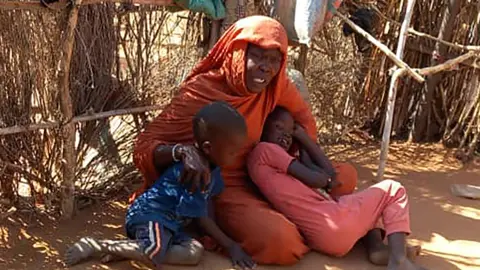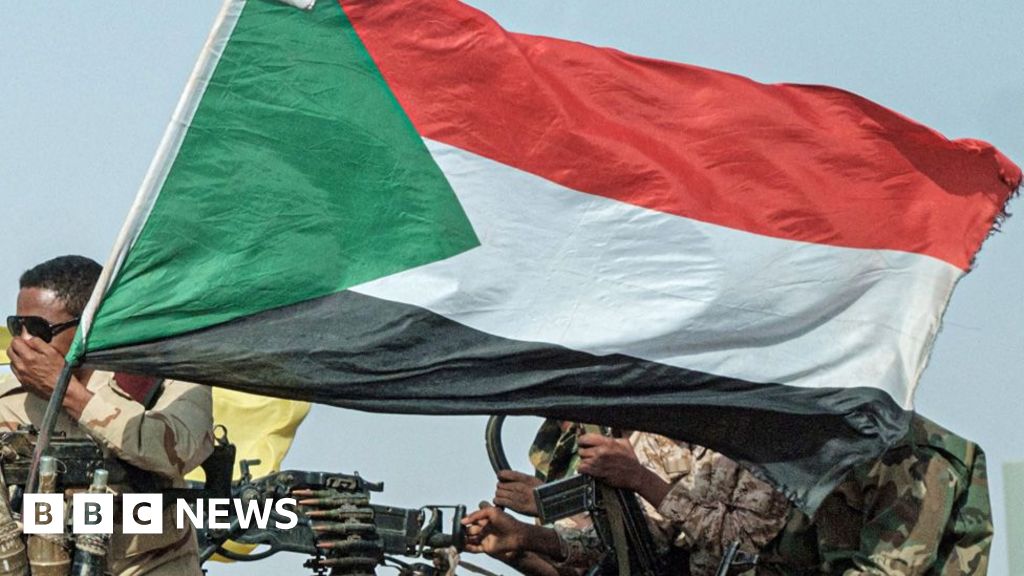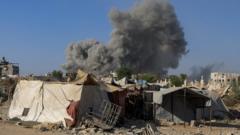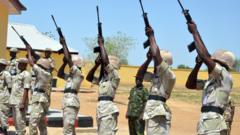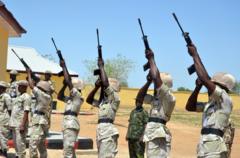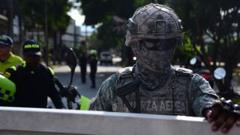In recent weeks, Northern Ireland has seen a surge of anti-immigrant violence, marked by bonfires adorned with effigies of migrant boats and the burning of homes belonging to immigrant families. This troubling trend has evoked memories of the sectarian conflicts, known as the Troubles, which once plagued the region, where fire was weaponized to intimidate communities perceived as outsiders.
While the immediate targets of these violent outbursts differ from the sectarian tensions of the past—when Loyalist Protestants clashed with Catholic nationalists—the underlying message remains the same: outsiders are unwelcome. Experts in social and political dynamics, like Duncan Morrow from Ulster University, articulate that territorialism is still deeply rooted in Northern Ireland’s societal structures, often enforced by armed groups that continue to patrol neighborhoods.
The recent violence ignited in Ballymena, a town known for its strong Protestant heritage, after two Romanian boys were charged with serious offenses against a local girl. Following a vigil that spiraled into chaos, riots broke out against the local Roma community, showcasing the fragility of societal peace in a region still healing from its tumultuous past. For six consecutive nights, incidents escalated across the region, leading to significant property damage and displacement, with authorities reporting that numerous families required temporary housing due to safety concerns.
While most Northern Irish citizens do not support violence, the recurrence of such incidents serves as a stark reminder of the region's unresolved tensions. The landscape of Ballymena is layered with reminders of past conflicts, highlighting a concerning trend towards nativism, reflected in public displays of animosity against immigrant populations.
Adding to this volatile environment are the remnants of paramilitary groups who have shifted to functioning as organized crime syndicates. The police suspect that these factions may have orchestrated some of the recent violence, further complicating the political and social fabric of the area. Instances of online organization among right-wing Loyalist groups have only exacerbated this pattern of unrest, invoking themes similar to historical anti-Catholic intolerance.
Recent events also highlight the cultural implications of ongoing tensions, marked by a controversial effigy commemorating a Unionist holiday that included slogans against immigration. With hardline sentiments often fueled by political figures, the ongoing unrest reflects a deep-seated fear of demographic change in what remains one of the least diverse regions in the UK.
Witnessing these events unfold, the atmosphere in Ballymena resembles a historical cycle, where the streets once divided by sectarian lines now echo new conflicts along lines of ethnicity and nationality. The mix of local pride and fear of the "other" provides fertile ground for violence, perpetuated by a complex web of social and political dynamics that resist easy interpretation. Observers note that the crowded bystanders during the riots appear almost as if part of a familiar play they’ve seen many times before, suggesting an unsettling acceptance of such displays of conflict as part of Northern Ireland’s ongoing narrative.
Caught in a spiral of unrest, Northern Ireland stands at a crossroads. The need for reconciliation and integration is paramount, even as echoes of its divisive past continue to surface amid contemporary struggles with immigration and identity.
While the immediate targets of these violent outbursts differ from the sectarian tensions of the past—when Loyalist Protestants clashed with Catholic nationalists—the underlying message remains the same: outsiders are unwelcome. Experts in social and political dynamics, like Duncan Morrow from Ulster University, articulate that territorialism is still deeply rooted in Northern Ireland’s societal structures, often enforced by armed groups that continue to patrol neighborhoods.
The recent violence ignited in Ballymena, a town known for its strong Protestant heritage, after two Romanian boys were charged with serious offenses against a local girl. Following a vigil that spiraled into chaos, riots broke out against the local Roma community, showcasing the fragility of societal peace in a region still healing from its tumultuous past. For six consecutive nights, incidents escalated across the region, leading to significant property damage and displacement, with authorities reporting that numerous families required temporary housing due to safety concerns.
While most Northern Irish citizens do not support violence, the recurrence of such incidents serves as a stark reminder of the region's unresolved tensions. The landscape of Ballymena is layered with reminders of past conflicts, highlighting a concerning trend towards nativism, reflected in public displays of animosity against immigrant populations.
Adding to this volatile environment are the remnants of paramilitary groups who have shifted to functioning as organized crime syndicates. The police suspect that these factions may have orchestrated some of the recent violence, further complicating the political and social fabric of the area. Instances of online organization among right-wing Loyalist groups have only exacerbated this pattern of unrest, invoking themes similar to historical anti-Catholic intolerance.
Recent events also highlight the cultural implications of ongoing tensions, marked by a controversial effigy commemorating a Unionist holiday that included slogans against immigration. With hardline sentiments often fueled by political figures, the ongoing unrest reflects a deep-seated fear of demographic change in what remains one of the least diverse regions in the UK.
Witnessing these events unfold, the atmosphere in Ballymena resembles a historical cycle, where the streets once divided by sectarian lines now echo new conflicts along lines of ethnicity and nationality. The mix of local pride and fear of the "other" provides fertile ground for violence, perpetuated by a complex web of social and political dynamics that resist easy interpretation. Observers note that the crowded bystanders during the riots appear almost as if part of a familiar play they’ve seen many times before, suggesting an unsettling acceptance of such displays of conflict as part of Northern Ireland’s ongoing narrative.
Caught in a spiral of unrest, Northern Ireland stands at a crossroads. The need for reconciliation and integration is paramount, even as echoes of its divisive past continue to surface amid contemporary struggles with immigration and identity.










